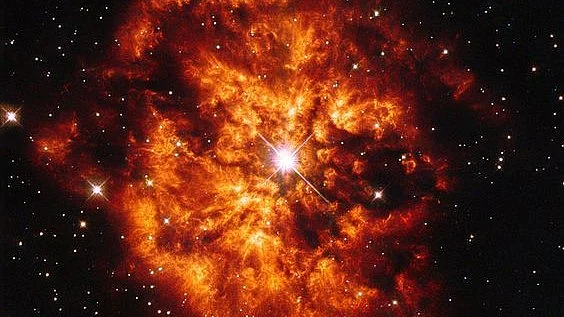Stargazers across the globe are abuzz with anticipation for a rare astronomical event – the impending nova outburst of T Coronae Borealis (T CrB). This dramatic explosion, expected to occur sometime between now and September 2024, will be a dazzling display visible to the naked eye for a week. It presents a remarkable opportunity to witness the raw power of stellar evolution firsthand.
The Duality of T Coronae Borealis
T CrB lies roughly 3,000 light-years away within the celestial realm of the Corona Borealis constellation, also known as the Northern Crown. This binary star system is a fascinating dance between two stars in vastly different stages of their lifespans. One partner is a white dwarf, a stellar cinder collapsed to an incredible density despite boasting a mass comparable to our Sun. Its companion is a red giant, a behemoth nearing the twilight of its stellar existence. Red giants are renowned for their immense size, ballooning to hundreds of times the diameter of our Sun.
The Trigger for the Nova
The upcoming nova event stems from the intricate relationship between these two celestial bodies. As the red giant continues its expansion, it engulfs a region called the Roche Lobe. Within this zone, the star's gravitational pull dominates, and any material venturing too close becomes bound to it. The red giant's swelling envelope spills over this boundary, transferring a wealth of hydrogen-rich material onto the white dwarf through a process known as accretion.
This influx of hydrogen accumulates on the white dwarf's surface. However, unlike its red giant companion, the white dwarf is a scorching inferno with immense density crammed into a relatively tiny volume. As the layer of hydrogen thickens, the pressure and temperature at its base steadily rise. Eventually, they reach a critical threshold, triggering a thermonuclear explosion on the white dwarf's surface. This sudden surge in energy release, fueled by the runaway fusion of hydrogen, is the phenomenon we observe as a nova.
A Blazing Interlude
In stark contrast to a supernova, which obliterates a star in a cataclysmic detonation, a nova like T CrB's is a fleeting spectacle. The nova will propel T CrB to a brilliance rivaling the North Star (Polaris) for about a week. This dramatic increase in luminosity will make the star visible to the naked eye, even for observers in light-polluted cities. It's a testament to the sheer power unleashed during the nova that such a distant object can become readily apparent in our night sky. However, this peak brilliance won't last forever. After this dazzling display, T CrB will gradually fade, potentially disappearing from naked-eye view for another 80 years.
A Celestial Opportunity Not to Be Missed
The impending nova outburst of T CrB presents a unique opportunity for skywatchers of all levels. During the peak, the star will be a naked-eye wonder, inviting anyone to marvel at the awesome power of stellar evolution. Binoculars will extend the viewing window for a few more days, allowing observers to witness the star's subtle changes in color and brightness as it transitions from its peak brilliance.
For astronomy enthusiasts seeking an even more immersive experience, telescopes will unlock a treasure trove of details. Astrophotographers can capture breathtaking images of the nova alongside the surrounding stars in the Corona Borealis constellation, forever preserving a record of this celestial spectacle.






























